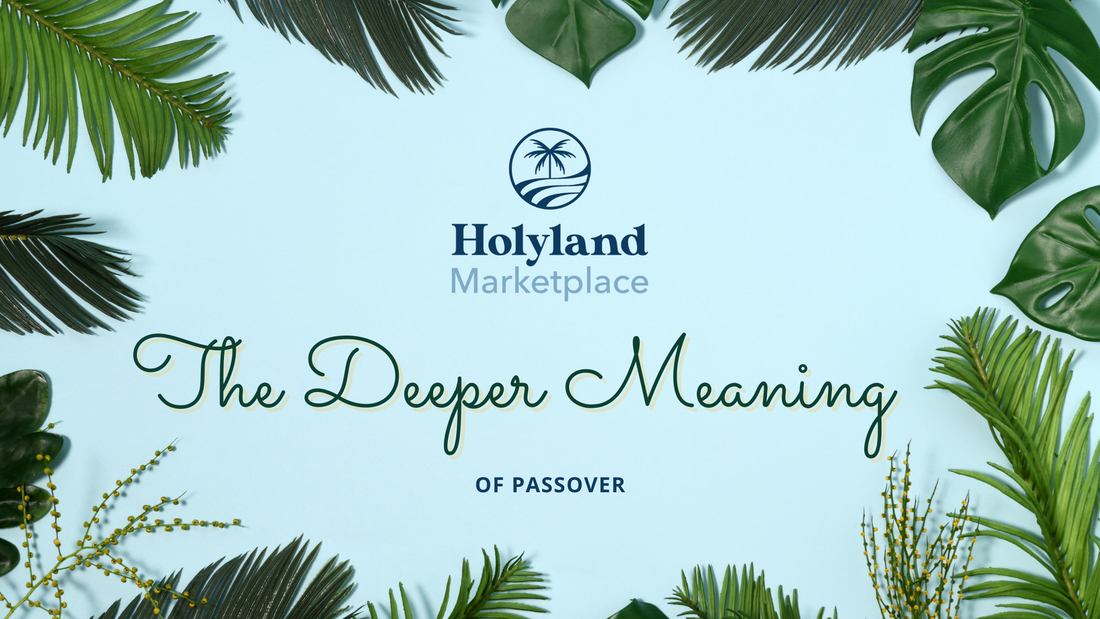
The Deeper Meaning of Passover
Share
Have you ever wondered what it would be like to go back and be a part of the events that took place in the Bible? Whether you are a new believer in Jesus (Yeshua) or have known Him for many years, participating in the feasts of Adonai is a wonderful way to bring the Bible to life and draw closer to the Father.
One feast in particular, Passover, brings us back to the Exodus, when the Israelites were delivered from Egypt. Today, we will be discussing the deeper meaning of Passover and how it points us to our Messiah.
Passover, or Pesach in Hebrew, was established as the first feast of the seven feasts mentioned in the Torah, in the month of Nisan, the first month of the Hebrew calendar. The details of how Passover came about are described in Exodus 12, when the Israelites were leaving Egypt.
The central elements of the Passover feast are the lamb, unleavened bread (matzah), and the bitter herbs (maror). In addition, we are to remove all leavened foods from our home in accordance with Exodus 12:19.
As it is commanded by Him to keep it as an "eternal ordinance" (Exodus 12:14), we continue celebrating Adonai's Passover today. This excerpt from the Complete Jewish Study Bible describes a traditional Jewish ceremony that accompanies the food preparation for Passover:
"Typically in observant Jewish homes, after sundown on the fourteenth of Nisan, a special ceremony called bedikat chametz (the search for the leaven) takes place in the home. The last little bits of leaven are found and removed from the premises.
The details of this process are intriguing. Since the house has been previously cleared, the leader of the house must purposely hide some leaven (bits of cookie or bread) in various places. Then the leader takes a feather, a wooden spoon, and a lighted candle, and the family begins searching for the final leaven."
God's Word is very clear on how each feast is to be prepared for and celebrated. This leads us to wonder then, what is the significance of Passover?
The first element in the Passover meal is the lamb. In Luke 22, Jesus (Yeshua) is seen celebrating Passover with his disciples soon before His execution. He speaks of the unleavened bread being His body, that would be given for them, and the cup being the new covenant in His blood. Even before He died and was resurrected, He was already showing them the significance of the feast that had been celebrated for generations.
Right before their exodus, Each Israelite family was required to sacrifice a lamb without any spot or blemish. It needed to be a male, only a year old. They were then to take its blood and smear it on the doorposts of their homes using a hyssop branch. This would set them apart from the Egyptians.
Yeshua, spotless and blameless, is the Passover lamb. He was slain that we, followers of the Way, Truth, and Life, may be delivered from slavery to sin, like the Israelites were delivered from slavery to the Egyptians. Jesus' (Yeshua's) blood covers us, frees us, and sets us apart from the world.
The second element in the Passover meal is the unleavened bread. In 1 Corinthians, Paul warns the believers in Corinth of the leaven of their sinful nature. As we are to partake of the unleavened bread on Passover, it is a reminder to us that we are also to be unleavened; that is, we are to "celebrate the feast not with old hametz (leaven), the hametz of malice and wickedness, but with unleavened bread—the matzah of sincerity and truth." (1 Cor. 5:8)
The Complete Jewish Study Bible, also speaks of the spiritual significance of the traditional Jewish method (referenced earlier) of removing the leaven from their homes:

"The leaven (sin) must be cleansed from our dwellings (and hearts). The method itself is informative. The light of the candle (the Word of God) illuminates our sin (Ps. 119:11). The leaven is scooped onto the wooden spoon for removal (like the wooden execution stake of the Messiah).
The following morning, this last bit of collected leaven is burned outside the home (in a can or bag) to symbolize its final destruction. This symbolizes Messiah's destroying sin "outside the camp" and making freedom from the power of sin available for all who believe."
The third and last element in the Passover meal is the bitter herbs. They represent the bitterness of bondage and slavery to sin. When Jesus (Yeshua) was celebrating Passover with His disciples, He dipped his matzah in the bitter herbs along with Judas Iscariot, the one who would soon betray Him.
Even though he had been with the Messiah, he was still in bondage to sin as evidenced by his later actions. This serves as a sober reminder that we are hopeless without a Savior and it is only by His grace that we have our Passover lamb and are thus able to receive eternal salvation.
As the time of Passover draws near, I would encourage you to take a moment and reflect on the Passovers from the past, from the events that took place during the time of Moses to Jesus' (Yeshua's) last Passover here on earth.

Ponder the deeper meaning of the foods that are eaten, and how they point to the Messiah. Let this feast be a reminder for all of us as believers to appreciate each eternal ordinance Adonai has given us to carry out knowing that it is all for our good and His glory.

